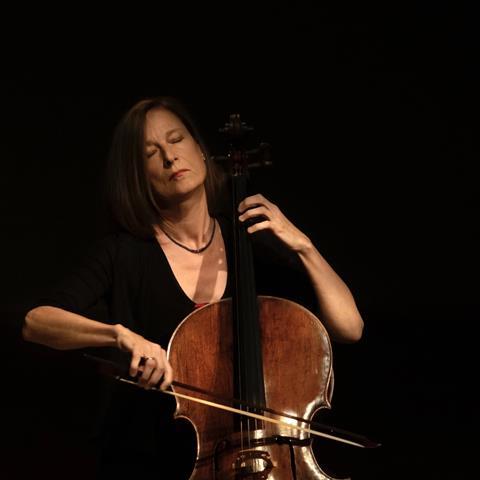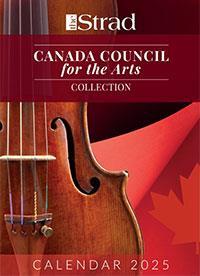US correspondent Thomas May speaks with Anja Lechner about the German cellist’s latest endeavour for ECM: her first album for solo cello, which combines two Bach suites with music originally for viola da gamba

Discover more Featured Stories like this in The Strad Playing Hub
It’s hard to believe that Anja Lechner had not recorded a solo cello album before Bach / Abel / Hume, her new release on the ECM label. A richly varied discography of more than 30 releases on ECM documents the German cellist’s insatiable curiosity for discovery. These range from recordings of the music of the composer–philosopher G.I. Gurdjieff to her collaborations with such artists as Patricia Kopatchinskaja, the French pianist François Couturier and the Argentine bandoneonist and composer Dino Saluzzi. But none of these have featured Lechner in a solo spotlight.
When producer Manfred Eicher, ECM’s founder, asked Lechner what she would like to record as a solo album, she opted for a mix of J.S. Bach with the Scottish composer (and soldier) Tobias Hume and the German-born English resident Carl Friedrich Abel. The former was born nearly a century before Bach, while the latter belonged to the generation leading up to the Classical era.
Both Hume and Abel were acclaimed players of the viola da gamba. Though the cello eventually eclipsed it, ‘the sound and language of the viola da gamba … remained present’ when Bach composed his six cello suites, and ‘much of this was incorporated into the suites’, as Kristina Maidt-Zinke points out in her excellent booklet essay.
Playing on a cello that predates Bach – a Rugieri from 1680 – Lechner creates a provocative dialogue between two of the suites and selected pieces by Hume and Abel that were originally composed for the viola da gamba.
Shortly before the album’s release, Lechner spoke from her home in Munich about her inventive programme and its relation to her longstanding artistic practise of crossing aesthetic borders to discover unexpected perspectives.
What inspired you to juxtapose these three composers?
There are so many recordings of the Bach suites by themselves, but I preferred to add music by Tobias Hume and Carl Friedrich Abel. Some of these tunes I discovered 15 years ago through the recordings of Jordi Savall on viola da gamba. Early music people are very much aware of these composers, but they are a discovery for the general audience. So I wanted to play Hume and Abel on the cello at my solo concerts to make them aware of their music. Also, I think that after having listened to music by Hume, for instance, Bach sounds different.
Little is known about Hume himself, but the pieces you selected to represent his musical world suggest an eccentric and curious personality.
I think Hume was a very gifted viola da gamba player. He was also a soldier and, I think, a really crazy man. So probably his life was quite tough. My impression is that he was a very free spirit. Abel was more like Philipp Emmanuel Bach. The kind of fantasy that I’ve included sounds like it is improvised, but everything is actually notated. The freedom comes through the expression, the inner feeling, what you give to the music.
Is there a thread here that actually links the three together?
I’ve played their music for many years, and for me they fit very well together. But at the same time they make for a good contrast. The first two solo suites by Bach in particular are basically in the middle and low register. With Hume and Abel, I can sing more in the higher registers, and more double-stop chords are involved.
Hume, Bach and Abel form a kind of bridge across various styles and tastes that were evolving. And your selection of works also seems to tell a story about the viola da gamba and how it was eclipsed by the cello.
During this period, I feel that Bach and Abel are not so far away from each other. Bach knew Abel’s father [Christian Ferdinand Abel], and the musicians of that time were, I think, much more open to playing music on different kinds of instruments. Bach was one of the first who wrote for the solo cello. On the other hand, even though he was much younger than Bach, Carl Friedrich Abel didn’t want to write for the cello and still preferred to write only for the viola da gamba.
But for me, music is music. If you understand the story of the music, you can play it with any instrument. That’s what I’m doing here and also in other projects. For instance, the French pianist François Couturier and I improvise a lot together using music from very different contexts just because we like it.
You yourself arranged the pieces by Hume and Abel for cello. Does playing with a Baroque bow, as you do on the recording, help in terms of crossing that border between the instruments?
The Baroque bow helps a lot, because for me it is natural to use it for the articulation – especially with Bach, who is much easier to articulate with a Baroque bow. Of course I’m using a different vibrato than I would use with Romantic music; sometimes I don’t even vibrate at all. It’s very important for me to play more in this parlando way. The articulation is more important than the phrasing.
With the Baroque bow, it’s much lighter, and I want to play more lightly. If you’re aware of the rules that Leopold Mozart wrote out in his Treatise on Violin Playing, it’s logical to play with a Baroque bow.
I always have loved the viola da gamba, though I’ve never learned it, but I think I can express some of the music written for it on the cello. The sound is of course different, and it is a challenge because it’s also a completely different way of playing. I don’t know any original cello music that sounds like Abel or Hume and that would give me so much freedom – that’s another aspect which I really like.
How does this sense of freedom relate to your ongoing interest in the art of improvisation?
Because everything is already there in Bach’s music, I think you don’t need to improvise. But you have some freedom. This freedom is in the articulation and in some little ornaments; but I’m not adding a lot. It’s like telling a story, but every time you tell it a little bit differently. This is my approach with Bach.
But with Hume, I have much more freedom, because I can change the register and edit some repeats or add more ornaments than I do with the music of Bach. In improvised concerts, I also often play the Arpeggio of Abel that is included on the album, but I play it differently every time. What I change is not the chords but the dynamics, the tempo, also the expression.
With regard to the Bach Suites, what impulses did you gain from your two great mentors, Heinrich Schiff and János Starker. Do they still influence you?
Heinrich Schiff was particularly important for my conception of Bach. Before studying with him, I had played a very Romantic Bach – probably like everybody during this time – with long bowing, vibrato, and Romantic expression. Schiff played for me the recordings of the suites by Anner Bylsma, who used the Baroque cello – I thought it sounded really ugly – and also by Nikolaus Harnoncourt. It sounded very rough and was so different that at first I found it hard to change my conception. But once I had understood, I was convinced that this was the right path and I could not go back anymore.
After I studied with Schiff, I studied with János Starker. I knew this would be difficult after the change I just described, because Starker’s way of playing Bach was quite traditional. But I always loved his Sixth Suite, since his technique was so incredible and he was one of the very few cellists who could play this suite with a lightness and a very dance-like quality. With Starker, I didn’t change my stylistic approach, but what I learned most from him was how to breathe, how to play without tension, and how to prepare motions. You need this to be free.
Why did you decide to record the album in the Himmelfahrtskirche in Munich?
Manfred [Eicher] is always looking for the right space that fits the music. We were searching for a church and found that the acoustic in this one is very inspiring. The notes can really travel. I can play with very with little effort and let the room answer.
Why did you wait so long to make your first solo cello recording?
I had always been involved in very different projects: first playing with the Rosamunde String Quartet and then playing a lot with improvising musicians. I gave the first performances of many pieces by the Ukrainian composer Valentin Silvestrov and by Tigran Mansurian, the Armenian composer. I consider myself a chamber musician. Every type of music I work with is in connection with others. That’s probably why I waited so long before deciding that I wanted to say something alone. And I decided to do that by going back to my roots. As a kid, I started with the Bach suites, and they have accompanied me my entire life.
Read: Joshua Bell and Steven Isserlis on their passion for Mendelssohn
Read: Rachel Barton Pine: ‘What we’re doing today is the history of tomorrow’
Discover more Featured Stories like this in The Strad Playing Hub.
The number one source for playing and teaching books, guides, CDs, calendars and back issues of the magazine.
In The Best of Technique you’ll discover the top playing tips of the world’s leading string players and teachers. It’s packed full of exercises for students, plus examples from the standard repertoire to show you how to integrate the technique into your playing.
The Strad’s Masterclass series brings together the finest string players with some of the greatest string works ever written. Always one of our most popular sections, Masterclass has been an invaluable aid to aspiring soloists, chamber musicians and string teachers since the 1990s.
The Canada Council of the Arts’ Musical Instrument Bank is 40 years old in 2025. This year’s calendar celebrates some its treasures, including four instruments by Antonio Stradivari and priceless works by Montagnana, Gagliano, Pressenda and David Tecchler.

























































No comments yet